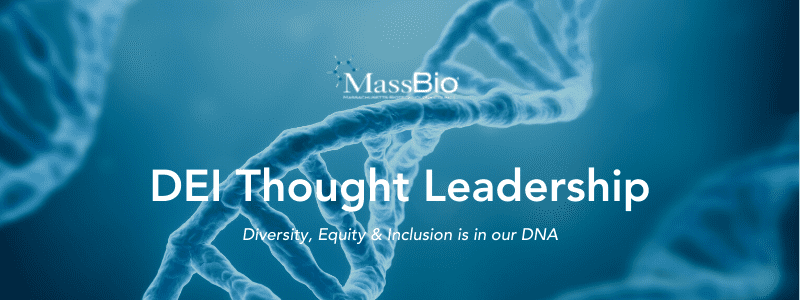
Certainly, embracing cultural diversity within the workplace can only enhance a business. With more corporations taking an all-encompassing approach to “normalizing” underserved groups within the workplace, businesses can work together to create a more inclusive, more accepting society.

However, this study reveals that, of these, religious inclusion has overwhelmingly been left out of corporate diversity initiatives. This is despite research showing the world is becoming more religiously diverse and faith continuing to be a core identity for the vast majority of workers worldwide.
An international data project developed by the Pew Research Center estimates our planet will have 2.3 billion more religiously affiliated people by 2050, compared with just 0.1 billion more religiously unaffiliated people. Religion is not in decline, despite the common narrative. By 2050, the top economies will shift from being majority Christian to include economies dominated by Hindus, Muslims, Buddhists and the unaffiliated. That means the world and its main marketplaces are becoming not only more religious, but also more religiously diverse.
Despite this, the just-released study by the Religious Freedom & Business Foundation (RFBF) shows that a majority of Fortune 100 companies fail to include even a single mention of faith or belief on their main diversity landing pages. Racial diversity, for example, is mentioned multiple times on 95% of landing pages for a total of more than 1,000 mentions. Religion is mentioned 92 times, across only 43% of the pages, putting it at the very bottom of the diversity and inclusion scale
Religious diversity is also at the bottom when it comes to one of the most potent programs corporations utilize for encouraging workplace inclusion – Employee Resource Groups (ERGs). Fortune 100 company webpages list 775 ERGs related to various affinities, but only 38 (5%) of these relate to faith or belief. That marks a stark contrast with the 298 ERGs for race, and 185 ERGs for gender or sexual orientation.
Reasons for this disconnect range from fear within companies of negatively impacting other inclusion programs, to concern over initiatives that become too focused on one faith, or the perceived potential to introduce a source of conflict in the work environment.
That said, here are some key points to consider when considering faith in DEI efforts:
1. Be mindful of religious festivals
All cultures have their own celebrations with a few important festivals throughout the year. Being mindful of this and allowing employees to take time off where appropriate will really help build an inclusive team. During Ramadan, Muslims are fasting and need more time to pray throughout the day, for example.
2. Recognize different religious dietary needs
Already well practiced within many businesses, accommodating different religious dietary needs will help faith groups feel more accepted within the workplace. Offering Halal, Kosher, vegetarian, and vegan food options in the canteen, meetings, and events, for example, is an important inclusive practice to implement.
3. Be mindful of appearance and religious attire
Business leaders need to lead from the top and show an understanding of religious attire. Women wearing a hijab has been the cause of a great deal of prejudice to this very day. Many people don’t know or accept that Muslim women choose to wear the headscarf; it is not forced upon them. Businesses need to be mindful that this attire is a faith choice and should leave their doors open for individuals to decide without fear of reprieve or dismissal.
4. Bring in faith and religious diversity and inclusivity training
Adding cultural sensitivity training to an onboarding program (and beyond) is a great way to encourage an all-accepting culture within a business from the get-go. Simple awareness training and educating on cultural differences, for example, can really go a long way and will help underserved groups feel more comfortable and understood.
5. Offer a private space for daily prayers
Making a room available for prayer will really help faith groups feel positive that their beliefs and practices are acknowledged and accepted. It will also help non-Muslims understand the daily practices and how these are part of a wider community and culture.
6. Keep the working environment free from victimization
Unfortunately, stereotypes can often lead to harassment, discrimination, or victimization against certain religions or beliefs, so it is important every workplace reinforces that this is unacceptable behavior. Regular training on cultural differences can nurture a deeper understanding between colleagues and help offset those stereotypes, ensuring the working environment is free from harassment and victimization.
As we’ve mentioned earlier, diversity within the workplace is crucial to ensuring a business is balanced with a stream of creative peaks. We learn so much about thinking outside the box in diverse environments. By bringing together different faiths within the workplace, a business will have a far wider perspective. It can offer an innovative, multi-dimensional creative point of view, which would not be possible with a one-dimensional team.
References
Ali Aslan Gumusay, Et. Al. Creating Space for Religious Diversity at Work. Harvard Business Review. (2020)
Brian J. Grim. Corporates often forget religious diversity. Here’s why they should not. World Economic Forum. (2020)
Wa’qaar Mirza. Recognising diversity and faith groups within the workplace. DiversityQ. (2021)
Zahra Lethome and Ruth Chepngeno Soi. Diversity, Equity and Inclusion: A Dialogue on Faith. Ashoka. (2021)